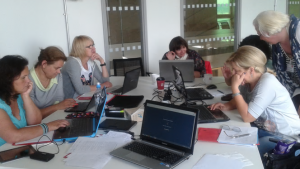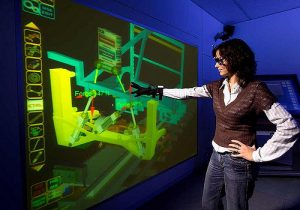
When considering networked communities we must first look at how to establish this sort of community and what principles are important in a successful one. In constructivist models, problem solving is at the heart of learning, thinking, and development. Learners solve problems and discover consequences by reflecting their experience and thus construct their own understanding. That being said, research shows that knowledge construction is rarely done in isolation but rather by creating and forming a knowledge building community (Lamon, Laferriere & Breuleux, in press). In fact, the goal for learning communities is for a group of people with focused common issues or problems to discourse and work to find solutions to problems, complete tasks, or refine processes beyond the capabilities of any single person. (Lamon et al., in press). The building of a classroom community of learners must be paramount for this type of community to foster.

When considering science knowledge generation in this sphere, several things need to be considered. Research shows that students may misinterpret or overlook important information in a simulation and teachers may be tempted to believe that simulations are automatically effective in communicating complex models to students (Stephens & Clement, 2015). Following this, in order to support knowledge generation teachers need to support students to promote reasoning and comprehension during use of simulations. As part of this, research has suggested that many teachers may need more guidance provided along with simulations to help them identify which features and relationships may be overlooked by students (Stephens & Clement, 2015). Virtual reality alone will not suffice and educators require information and guidance on how to support learners through the science knowledge generation process in networked communities.

To expand on this, research has shown that new knowledge is created in a social process and in concrete situations, and this will occur if a community has reached the boundaries of its existing knowledge and are exposed to conflicting concepts (Johannes, 2011). Using virtual reality to meet the goals of knowledge generation in science is prescient in several ways. Learner object interaction in virtual reality provides the model of a cognitive operation that learners have to carry out mentally in order to create their own mental model of certain facts or of a topic of instruction. It may support knowledge building especially in such domains in which spatial information is essential for understanding. In addition, in networked communities personal and social presence is fostered within the community and is amplified if students are affected personally and see some connection between their own person and what happens in a virtual reality. This also increases collective cognitive responsibility of a group for succeeding together (Johannes, 2011). Educators can provide for rich knowledge generation in networked communities through providing virtual reality experiences that tap into connections or experiences that students feel are relevant to them.
The educator is an integral part of creating the sustainability of knowledge generation through virtual reality as the educator sets up the environment for knowledge generation to occur. The educator must consider the needs of the students, gently guide them back on the right path if they have strayed too far, and always keep in mind the dynamics of the networked community and how to facilitate discussion and reflection. In addition, the educator must critically examine the virtual reality to ensure it is not creating more misconceptions, and this is done through assessing on an ongoing basis throughout the process and making corrections as necessary. So, in my mind, knowledge generation in a networked community depends more on frontloading the experience, carefully monitoring the process of social interaction and knowledge generation and providing time for all of this plus time to reflect on the learning. I look forward to your views about this.
Johannes, M. (2011). Knowledge building in user-generated online virtual realities. Journal of Emerging Technologies in Web Intelligence 3, 1. DOI: 10.4304/jetwi.3.1.38-46.
Lamon, M., & Laferrière, T., & Breuleux, A. (in press). Networked communities. In P. Resta, Ed., Teacher development in an e-learning age: A policy and planning guide, UNESCO.
Stephens, A., & Clement, J. (2015). Use of physics simulations in whole class and small group settings: Comparative case studies. Journal of Computers & Education. 86, C, pp. 137-156.